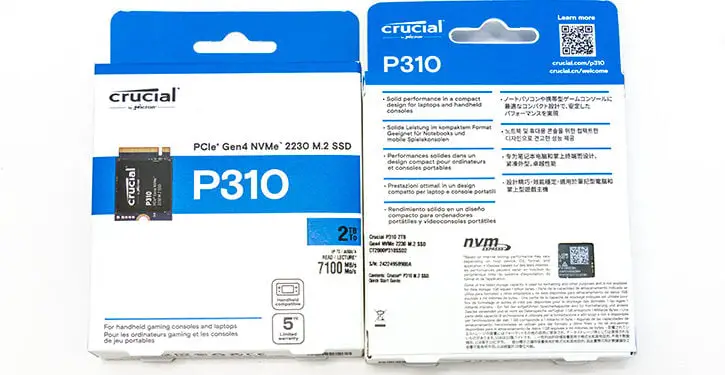It never ceases to amaze us the directions the consumer storage marketplace sometimes randomly go in. Take for example the latest craze… 22x30mm M.2 drives that promise to deliver performance levels that leave many a M.2 22x80mm premium offerings from just a few years ago in the dust. While that sounds like a tall tale told around the campfire, it actually is what the new breed of ultra-compact M.2 NVMe (PCIe 4.0) drives like the Crucial P310 series promise to deliver. Furthermore it promises to not only offer sequential speed in excess of 7Gbps, and 1 to 1.2 Million (r/w) IOPS, but also offer up to 2TB of capacity.

For many those promises of capacity and performance and size certainly are eyebrow raising considering one of the best, for its day, Seagate FireCuda 530 2TB’er cannot match that level of performance… and that was a great 2022 SSD we personally used in a lot of builds. Even by 2024 standards fitting all that performance into a 2230 form-factor is noteworthy… as typically 80x60mm was about as small as you could go without sacrificing performance. Yet, thanks in no small part to the combination of Micron’s 2400MT/s Replacement Gate NAND and Phison E27 controller, that is what is now widely available for purchase… albeit with one small catch: the asking price. $210 (USD) and an under a 11 cents per GB of capacity is rather decent, but these days PCIe 4.0 drives (including Crucial’s very own T500 series) go for well under 8 cents. Making the P310 one of the most (relatively) expensive P models to be released to date.
The other potential deal-breaker is, much like the M.2 2242 form-factor only to an even greater extent, the M.2 2230 form-factor is a compromise design. One that prioritizes compactness over everything else. Including performance. Including robustness. Even including price. Put bluntly, when dealing with a PCB that is only 22 millimeters wide and 30 millimeters long there is just not much room for components. This issues are further compounded when these new mighty mites are intended for Steam Deck and RoG Ally sized devices where single sided PCBs are not just a de rigueur but a basic requirement. To be precise, to hit 2TB and the 2230-S dimensions companies like Crucial have had to make some hard choices. First up is there is only room for 2 ICs. One for the controller and one for all the NAND ICs. Thus the use of the DRAM cache-less E27 controller instead of a E25… and the use of QLC instead of TLC NAND.
On the positive side, the new E27 4-channel controller promises to be unlike 99 percent of dram-less controllers that have come and gone over the years. What this means it may not actually be a(n entirely) crippled controller. Especially when paired with (albeit the QLC variant of the) ‘full speed’ FortisFlash 232-Layer Micron Replacement Gate CuA NAND (thus the “N” instead of “B” proceeding the vaunted 58R name). Needless to say, this combination raises a veritable ton of questions (e.g. how good is the performance in the real-world), and a few concerns (e.g. oof that NAND endurance), most of which we will endeavor to answer. Furthermore, thanks to Crucial, we will be able to show you what not just one but two of these little bad boys can do. So let’s dig in.










